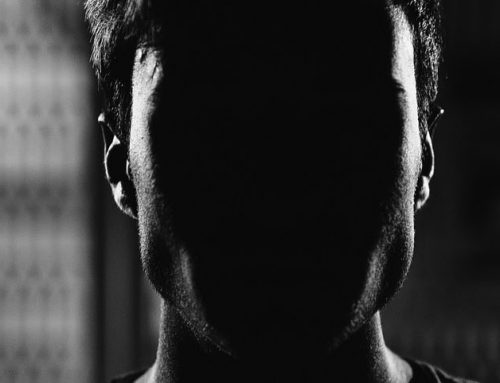By: David G. Bayliss – August 17, 2019.
INVESTIGATIONS, PROSECUTIONS AND DEFENCES[1]
Introduction
The incidence of child pornography (CP) has escalated dramatically with the advent of the internet. As one Ontario Superior Court Judge recently observed:
26 In a pre-internet world, the ability of people inclined towards pedophilia to find like-minded individuals, share experiences, cultivate their fantasies and seek access to victims was naturally constrained by the isolation imposed by their relatively small numbers and by the very great fear of the consequences of discovery.
27 Modern technology has considerably blunted both restraints. The internet has largely defeated the former isolation of pedophiles. Once scattered individuals are now able to find each other. In doing so, they acquire the strength and far greater potential for harm of what amounts to nothing less than a virtual support group from a world-wide community unified by shared illicit interests in the exploitation of children. It has also blunted their fear of discovery by cloaking their activities in the apparent anonymity of the internet and the potential complexity of cross-border law enforcement.
28 The result has been a virtual firehose of pornographic images of victimized children spewed across the internet. These images are collected and added to by participants, spawning imitators in their thousands. Chat groups and peer-to-peer platforms proliferate by which pedophiles encourage each other either to violate children to whom they have access or to encourage others to do so and share pictures of their exploits. A veritable barter economy has grown around the collecting of these pictures and videos. There are numerous instances of such trading to be found in relation to Mr. Jonat’s on-line activities. The currency of trade in this “economy” is not money but the possession of tradable pornographic material — the fresher and the more extreme the better. In this fashion barriers constraining the once isolated individual from progressing from voyeur to active perpetrator are eroded and the numbers of harmed children grows exponentially.
29 Once images or videos are circulated, the degradation of these children becomes both permanent and global. Images once distributed through this informal network can never be truly eliminated from circulation. The harm is both acute and perpetual. The growing numbers of victims — most unidentified – suffer from wounds that are continually re-opened and harm that can manifest itself over decades.
R. v. Jonat, 2019 [2]
This judicial quote is cited primarily to illustrate the current approach of Canadian courts to the problem of CP.
Canadian CP Legislation
The explosion of the international CP industry has been met with a legislative response in most nations, to varying degrees of intensity[3]. Canada has some of the strictest laws on the books.
CP in all its forms is prohibited in Canada by Sub-section 163.1 of the Criminal Code of Canada (CCC)[4]. For the purposes of this legislation, a “child” is defined as a person under the age of eighteen years.
“CP” is defined as follows:
(a) a photographic, film, video or other visual representation, whether or not it was made by electronic or mechanical means,
(i) that shows a person who is or is depicted as being under the age of eighteen years and is engaged in or is depicted as engaged in explicit sexual activity, or
(ii) the dominant characteristic of which is the depiction, for a sexual purpose, of a sexual organ or the anal region of a person under the age of eighteen years;
(b) any written material, visual representation or audio recording that advocates or counsels sexual activity with a person under the age of eighteen years that would be an offence under this Act;
(c) any written material whose dominant characteristic is the description, for a sexual purpose, of sexual activity with a person under the age of eighteen years that would be an offence under this Act; or
(d) any audio recording that has as its dominant characteristic the description, presentation or representation, for a sexual purpose, of sexual activity with a person under the age of eighteen years that would be an offence under this Act.
The legislation creates four discrete offenses:
- Making CP—”makes, prints, publishes or possess for the purpose of publication”;
- Distribution of CP—”transmits, makes available, distributes, sells, advertises, imports, exports or possesses [for the above purposes]”;
- Possessing CP; and
- Accessing CP—”knowingly causes CP to be viewed by, or transmitted to, himself or herself”.
The law stipulates that, if a court finds that any CP crime was committed with “the intent to make profit”, this will be considered an “aggravating factor” in deciding the sentence an offender should receive. Although many different factors on a sentencing hearing can be argued by the prosecutor to be aggravating, a factor that is specifically designated as aggravating by Parliament will carry more weight in the sentencing assessment.
The law does specify narrow circumstances under which possession of CP is not a crime. It is not a crime if the defendant believed the person depicted in the material was 18 years of age or over, but only if the defendant “took all reasonable steps to ascertain the age of the person”. It is noteworthy that, even if the person depicted in images is factually 18 years of age or older, the material is still illegal if it “[depicts] that person as being under the age of 18 years”.
Possession of CP will also not be illegal if it is possessed for “a legitimate purpose related to the administration of justice or to science, medicine, education or art” and “does not pose and undue risk of harm to persons under the age of eighteen years”.
Mandatory minimum jail sentences are prescribed for all CP crimes. A judge has no discretion to impose a sentence below the mandatory minimum specified. The mandatory minimums have increased over the last decade and are currently:
- Making CP—maximum sentence of 14 years jail, mandatory minimum sentence of 1 year jail;
- Distribution of CP—maximum sentence of 14 years jail, mandatory minimum sentence of 1 year jail;
- Possessing CP
- In an indictable prosecution (more serious)—maximum sentence of 10 years jail, mandatory minimum sentence of 1 year jail;
- In a summary conviction prosecution (less serious) —maximum sentence of 2 years jail, mandatory minimum sentence of 6 months jail;
- Accessing CP
- In an indictable prosecution (more serious)—maximum sentence of 10 years jail, mandatory minimum sentence of 1 year jail;
- In a summary conviction prosecution (less serious) —maximum sentence of 2 years jail, mandatory minimum sentence of 6 months jail.
Constitutional challenges to the mandatory minimum sentences for CP offenses have met with mixed results[5]. However, even when courts have struck down the mandatory minimum sentences as constitutionally invalid, those same courts have made clear that, after most convictions, a sentence at or above the mandatory minimum sentence will be appropriate. See for example the decision of the Ontario Court of Appeal in R. v. John[6]declaring unconstitutional the mandatory minimum sentence for Possession of CP.
Sentences for CP crimes continue to escalate world-wide and Canada is no exception. Most defendants charged with CP offenses come before the courts with little or no prior police contact. They may be young people, or they may be middle-aged or older persons who have led otherwise exemplary, even outstanding, lives. They may be businesspeople, professionals, educators or hardworking tradespeople. But if convicted, even for first offenders, jail sentences are difficult to escape. Although most CP crimes involve no physical contact with children by the offender, CP offenses are designated as sexual crimes. Thus, convictions attract ancillary orders associated with contact sexual crimes. Mandatory provision of DNA samples, restrictions on movement, associations and internet use, and registration with provincial and federal sex offender registries, often for life, are the norm[7].
While effective laws are no doubt necessary to protect children, the current methodology for dealing with the crises is unnuanced and, some would say, tinged with hysteria and lacking in forethought. Draconian legislation focused on denunciation and deterrence leaves little space for rehabilitation. Attraction to CP is an illness, not a crime. Acting on the compulsion to view such material is illegal, but the current uncompromising societal approach to what is evidently a more widespread social problem than previously appreciated, inhibits treatment of potential offenders who dare not speak the words “CP”, even to a therapist. Logically, a possible result of the current approach is that individuals who are drawn to such material and want to seek mental health treatment are unlikely to do so for fear of facing serious legal consequences if they do. This concern is not without basis. While, thus far, it is not the law in Canada that therapists must report CP involvement disclosed by a patient, at least one American jurisdiction has already crossed that Rubicon.[8]
Canadian CP Police Investigations
CP crimes in Canada are aggressively investigated and prosecuted.
The vast majority of CP activity is internet based. The “typical” offender is someone who has accessed or obtained the illicit material from the darknet utilizing supposedly anonymous communication software[9], or has joined popular peer-to-peer file sharing networks (Shareaza, Pirate Bay, GigaTibe, Vuze, Bitcomet, uTorrent etc.) for the purpose of obtaining CP. The pattern is often repeated. People believe they are indulging in forbidden fantasies in the solitude of their homes, sometimes unaware they are committing a crime, only to be interrupted by a hard knock on their door in the dead of night and led away in handcuffs in front of their families. The nightmare of being charged with a CP offense begins. Humiliation, ostracization, job loss, reputational ruin, cross-border travel restriction and relationship disintegration often ensue[10].
Most large Ontario police forces, utilize Internet Child Exploitation (ICE) units of officers specially trained in computer and internet technology, to detect and locate persons accessing CP.
Various investigative strategies are employed including:
- Police take over and manage existing CP websites[11]. They identify the internet protocol (IP) address of computers accessing the site. From the IP address the Internet Service Provider (ISP) is identified. Investigators apply to a Justice for a production order to compel the ISP to provide the IP address subscriber information including the physical address associated to the subscriber. A further application for a warrant to search the physical address is then made;
- Investigators utilize an automated forensic software application to engage with peer-to-peer file sharing networks. This forensic software also communicates with an international database of IP addresses suspected to be exchanging CP files[12]. ICE unit officers can filter results from the database to receive IP addresses from specific geographic areas of interest, usually their own local jurisdiction. Files downloaded by the forensic software from an IP address of interest are then viewed by a human investigator to determine if the material (in that officer’s opinion) meets the Canadian definition of CP. If so, the investigators then apply to a Justice for a production order to compel the ISP to provide the IP address subscriber information including the physical address associated to the subscriber. A further application for a warrant to search the physical address is then made;
- In Canada, anyone providing internet services is compelled by law to report to the authorities an IP address or Uniform Resource Locator where CP “may be available to the public” or the service provider “has reasonable grounds to believe that their Internet service is being or has been used to commit a child pornography offence” [13]. This mandatory reporting duty recently resulted in a conviction when GOOGLE made such a report to police in British Columbia[14]. Canadian police forces also receive tips from extra-jurisdiction forces and various national and international organizations combatting CP, such as the Canadian based National Child Exploitation Coordination Centre (NCECC) and the U.S. based National Centre for Missing and Exploited Children. Canada also has Cybertip.ca , operated by the Canadian Centre for Child Protection, a national tipline for reporting sexual exploitation of children. These are just some of the resources available to Canadian police forces.
Defending CP Charges
CP investigators walk the fine line of protecting children while justifying the privacy intrusions inherent in their investigations. There is an intrinsic conflict of two laudable goals—protection of children and respect for individual privacy mandated by the Canadian Charter of Rights and Freedoms. In CP cases, criminal litigation often focusses at the intersection of these values. Was the granting of the initial production order leading to the search warrant justified, or was it an unwarranted invasion of the Defendant’s privacy? Was the material that ostensibly justified obtaining the initial production order properly defined as CP, or was the officer mistaken or dishonest in his subjective interpretation of the images? Was the applying officer otherwise honest in his or her affidavit supporting the application for the production order or did he or she mislead the Justice who issued the order? Was the subsequent search warrant properly issued, or should the evidence found as a result be excluded because of a violation of the Defendant’s Charter rights? Was the search warrant itself executed in a reasonable manner or was it overbroad or conducted in an otherwise unreasonable manner.
The lawyers at David G. Bayliss Professional Corporation are computer literate and well versed in privacy-based defences. We employ the most qualified and respected computer/internet experts who meticulously analyze forensic mirror images of the seized devices, to assist us in dissecting police investigative procedures and production order and search warrant protocols.
Sometimes, a particular device seized by the police cannot be attributed to a specific user. ISP subscriber information may identify a physical address for a wi-fi router but cannot necessarily identify an exclusive user of the IP address. Recently, our firm successfully defended against an Operation Pacifier11 prosecution by having all charges withdrawn at the preliminary hearing on this basis—R. v. T [15].
These prosecutions can engage s. 2(b) of the Charter of Rights, the right to “freedom of thought, belief, opinion and expression, including freedom of the press and other media of communication”. Such a defence may be available in cases where the images in question have artistic value or some other legitimate purpose that is not outweighed by any risk to children the images present.
Sometimes, the Crown does have the evidence and has taken all the correct steps to prove its case beyond a reasonable doubt. In consideration of this possibility, our firm works with highly respected forensic psychologists, psychiatrists and psychotherapists who specialize in assessment and treatment of sexual paraphilias, including attraction or addiction to CP. As these assessments and treatments are undertaken in the context of legal proceedings, they are completely confidential and protected by solicitor-client privilege. In the event that criminal proceedings do proceed to the sentencing phase, we are usually able to present positive risk assessments and evidence of long-term rigorous counselling sessions demonstrating the offender’s remorse and insight into his or her crime, which can form the basis for a non-custodial sentence. Employing these approaches, David G. Bayliss recently obtained a conditional sentence (a sentence served in the home) for a client in a CP case involving a large and extreme collection of CP materials—R. v. M[16]
The bottom line—CP investigations and prosecutions are complex, both technically and legally. While this makes them challenging to defend, it sometimes makes them difficult to successfully prosecute as well. The lawyers at David G. Bayliss Professional Corporation understand this and have all the tools to maximize a Defendant’s likelihood of success in a criminal prosecution for CP. When charged with a CP crime, you need knowledgeable and compassionate but fearless advocates in your corner. You need the lawyers at David G. Bayliss Professional Corporation.
David Bayliss August 17, 2019
[1] This article is written for consumption by persons not trained in the law. It is intended for the layperson interested in general information about the subject. It is not intended to be legal advice for people charged with or in peril of being charged with a criminal offence. If you are charged or may be charged with a criminal offence, you should retain a lawyer and obtain proper legal advice tailored to the circumstances of your case.
[2] https://www.canlii.org/en/on/onsc/doc/2019/2019onsc1633/2019onsc1633.html
[3] See http://chartsbin.com/view/q4y
[4] https://laws-lois.justice.gc.ca
[5] For the current constitutional status of mandatory minimum sentences for all criminal offenses in Canada see https://mms.watch, courtesy of Matthew Oleynik.
[6] https://www.canlii.org/en/on/onca/doc/2018/2018onca702/2018onca702.html?autocompleteStr=r.%20v.%20john&autocompletePos=6
[7] Federal Statute—Sex Offender Information Registration Act https://laws-lois.justice.gc.ca/eng/acts/S-8.7/FullText.html; Ontario Sex Offender Registry– https://www.ontario.ca/laws/statute/00c01?search=sex+offender+
[8] https://www.latimes.com/local/lanow/la-me-ln-therapist-pornography-appeal-20170110-story.html
[9] See for example, TOR https://en.wikipedia.org/wiki/Tor_%28anonymity_network%29
10] Suicides following charges of CP are frequent and well documented https://duckduckgo.com/?q=child+porn+suicide&atb=v145-1__&ia=web https://www.thestar.com/news/gta/2010/12/17/the_direct_route_from_child_sex_charges_to_suicide.html
[11] See for example Operation Pacifier https://www.govtech.com/public-safety/Investigation-of-FBIs-Child-Pornography-Operations-Sparks-Controversy-Over-Internet-Privacy.html
[12] Internet Crimes Against Children Child Online Protective Services (ICACOPS)
[13] An Act Respecting the Mandatory Reporting of Internet Child Pornography by Persons Who Provide And Internet Service https://laws-lois.justice.gc.ca/eng/acts/I-20.7/FullText.html
[14] R. v. Quested https://www.canlii.org/en/bc/bcpc/doc/2019/2019bcpc95/2019bcpc95.html?autocompleteStr=r.%20v.%20quested&autocompletePos=1
[15] July 17, 2018
[16] August 14, 2019







